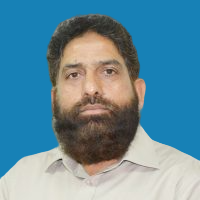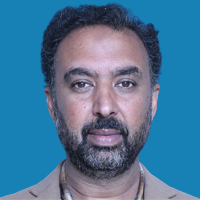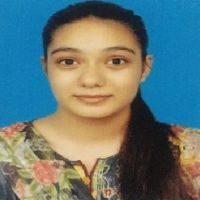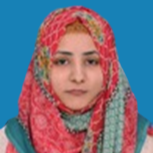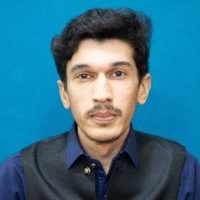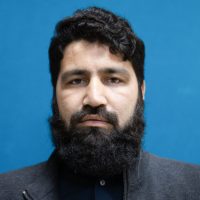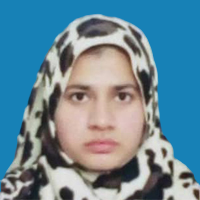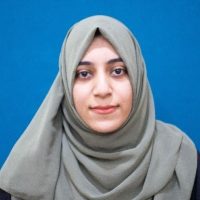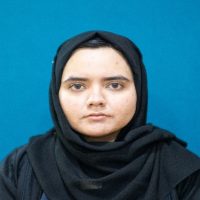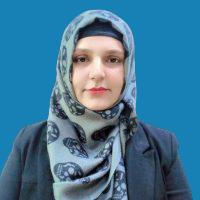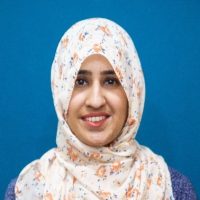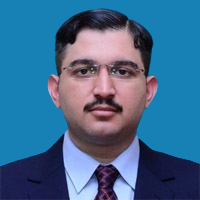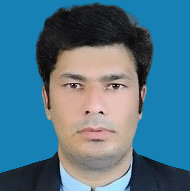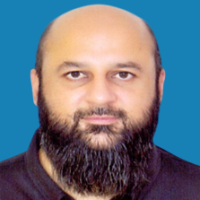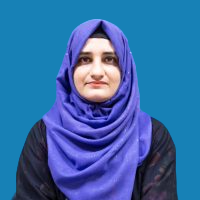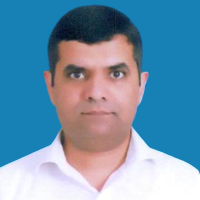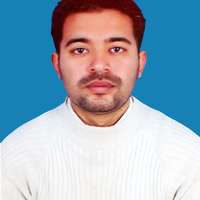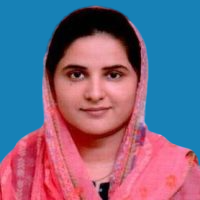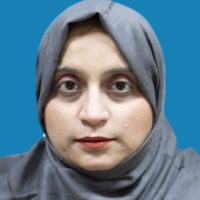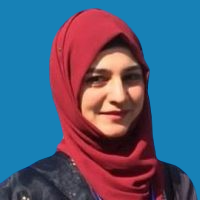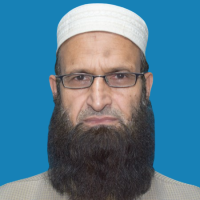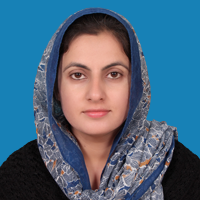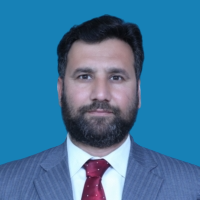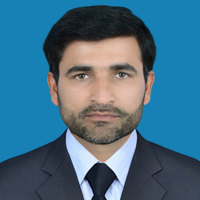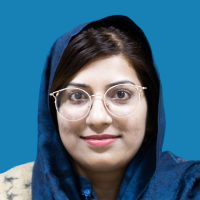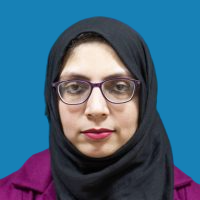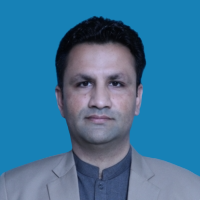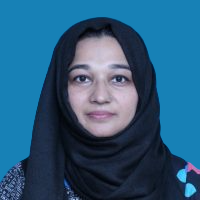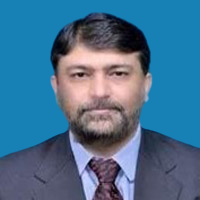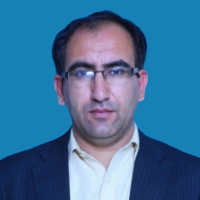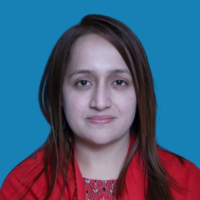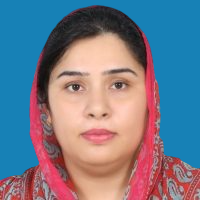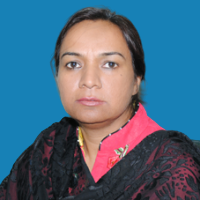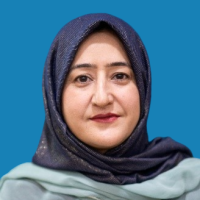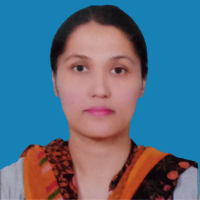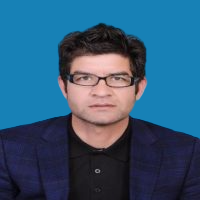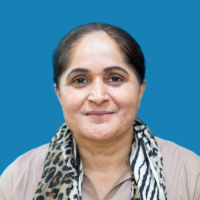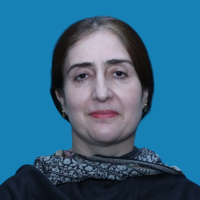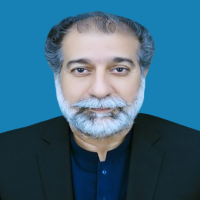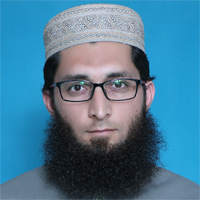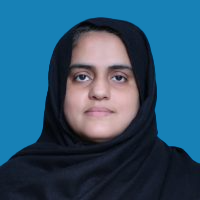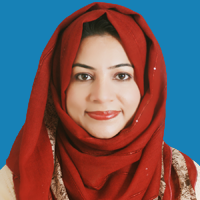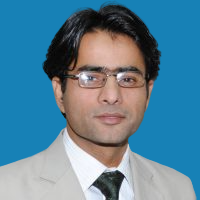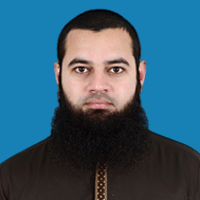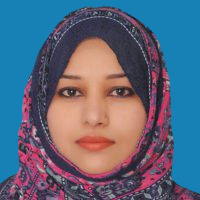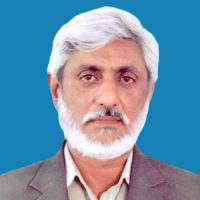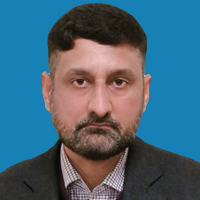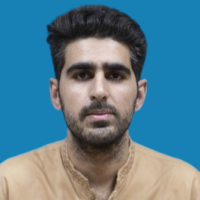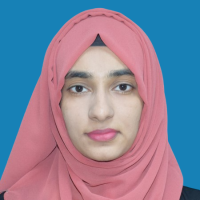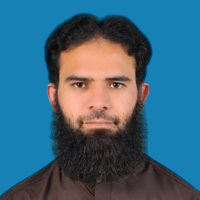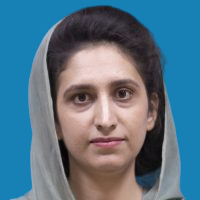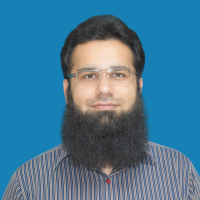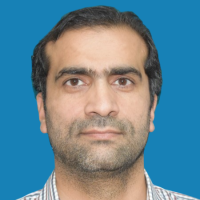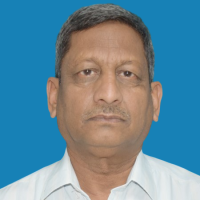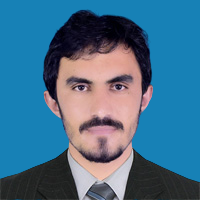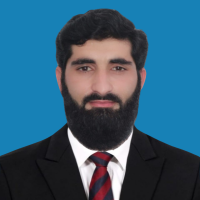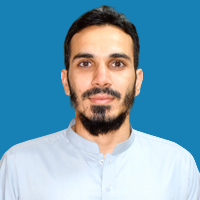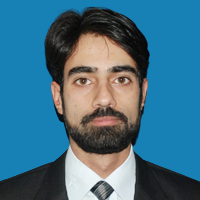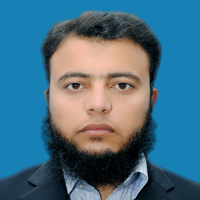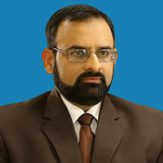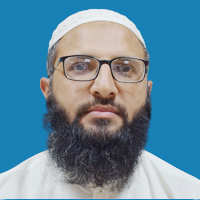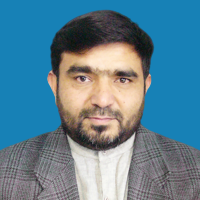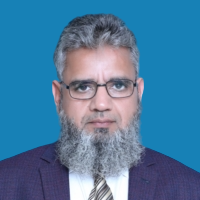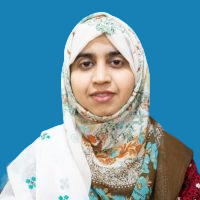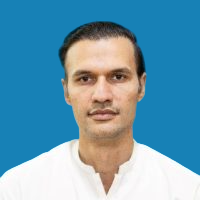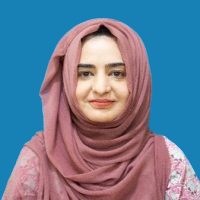| 1 | S. I. Malik, N. Ahmed, S. Jabeen, F. Rashid, N. Lal, M. Ali, A. Sattar, A. Ali, A. Ali, M. Arshad, Y. Fu et al., “Valuation of knowledge, attitude, practices of tuberculosis among the health care workers from Islamabad Pakistan,” Acta Tropica, vol. 257, p. 107317, 2024. | 2024 |
| 2 | H. Ahsan, M. Asghar, and S. I. Malik, “Potential diagnostic and drug target markers in glioblastoma,” Scientific Reports, vol. 14, no. 1, p. 7292, 2024. | 2024 |
| 3 | S. Hussain, H. Bokhari, X. Fan, S. I. Malik, S. Ijaz, M. A. Shereen, and A. Fatima, “MicroRNAs modulation in lung cancer: exploring dual mechanisms and clinical prospects.” Biocell, vol. 48, no. 3, pp. 403-413, 2024. | 2024 |
| 4 | H. Ahsan, S. I. Malik, F. A. Shah, H. A. El-Serehy, A. Ullah, and Z. A. Shah, “Celecoxib suppresses NF-κB p65 (Rela) and TNFα expression signaling in glioblastoma,” Journal of Clinical Medicine, vol. 12, no. 20, p. 6683, 2023. | 2023 |
| 5 | H. Ishaq, T. Ahmed, and S. I. Malik, “The association between stress factors and number of meals consumed per day in a sample of Pakistani students,” World Nutrition, vol. 14, no. 4, pp. 33–40, 2023. | 2023 |
| 6 | H. Ahsan and S. I. Malik, “NGS-mutational analysis of driver genes and TGFB1 with tumor suppressive and oncogenic roles in glioblastoma: An integrated approach with driver DBV3,” Genomics (PCGP), vol. 56, no. 04, pp. 102-125, 2023. | 2023 |
| 7 | S. Hussain and S. I. Malik, “Proliferative effects of lung cancer cells derived exosomes on T cells,” Brazilian Archives of Biology and Technology, vol. 65, p. e22210234, 2022. | 2022 |
| 8 | S. Hussain and S. Malik, “Effects of tumor derived exosomes on T cells markers expression,” Brazilian Journal of Biology, vol. 84, p. e250556, 2022. | 2022 |
| 9 | A. Sajid, M. S. Saeed, R. M. Malik, S. Fazal, S. Malik, and M. A. Kamal, “Prediction of secondary and tertiary structure and docking of RB1WT and RB1R661W proteins,” Current Biotechnology, vol. 11, no. 1, pp. 71–85, 2022. | 2022 |
| 10 | S. Arif, H. Saqib, M. Mubashir, S. I. Malik, A. Mukhtar, S. Saqib, S. Ullah, and P. L. Show, “Comparison of Nigella sativa and Trachyspermum ammi via experimental investigation and biotechnological potential,” Chemical Engineering and Processing-Process Intensification, vol. 161, p. 108313, 2021. | 2021 |
| 11 | S. Qiu, A. Munir, S. I. Malik, S. Khan, and A. Hassan, “Identification of differentially expressed genes and pathways crosstalk analysis in rheumatoid and osteoarthritis using next-generation sequencing and protein-protein networks,” Saudi Journal of Biological Sciences, vol. 28, no. 8, pp. 4656–4663, 2021. | 2021 |
| 12 | F. Butt, M. Yasinzai, S. I. Malik, and A. Munir, “Isolation and characterization of leishmanial adenine aminohydrolase as a drug target,” Current Computer-Aided Drug Design, vol. 17, no. 7, pp. 905–915, 2021. | 2021 |
| 13 | S. Hussain, A. Fatima, X.-X. Fan, and S. I. Malik, “The biological importance of cells secreted exosomes.” Pakistan Journal of Pharmaceutical Sciences, vol. 34, no. 6, pp. 2273-2279, 2021. | 2021 |
| 14 | S. Hussain, S. E. Z. Bokhari, X. X. Fan, and S. Iqbal, “The role of exosomes derived miRNA in cancer,” J of Pak Med Assoc, vol. 71, no. 7, pp. 1856–61, 2021. | 2021 |
| 15 | M. T. Khan, M. T. Zeb, H. Ahsan, A. Ahmed, A. Ali, K. Akhtar, S. I. Malik, Z. Cui, S. Ali, A. S. Khan et al., “SARS-CoV-2 nucleocapsid and Nsp3 binding: an in silico study,” Archives of Microbiology, vol. 203, pp. 59–66, 2021. | 2021 |
| 16 | A. Munir, S. I. Malik, and K. A. Malik, “De-novo ligand design against mutated Huntington gene by ligand-based pharmacophore modeling approach,” Current Computer-Aided Drug Design, vol. 16, no. 2, pp. 134–144, 2020. | 2020 |
| 17 | S. Hussain, Y.-J. Xie, D. Li, S. I. Malik, J.-C. Hou, E. L.-H. Leung, and X.-X. Fan, “Current strategies against COVID-19,” Chinese Medicine, vol. 15, pp. 1–12, 2020. | 2020 |
| 18 | M. T. Khan, A. C. Kaushik, Q. u. a. Rana, S. I. Malik, A. S. Khan, D.-Q. Wei, W. Sajjad, S. Ahmad, S. Ali, Ameenullah et al., “Characterization and synthetic biology of lipase from Bacillus amyloliquefaciens strain,” Archives of Microbiology, vol. 202, pp. 1497–1506, 2020. | 2020 |
| 19 | M. T. Khan and S. I. Malik, “Structural dynamics behind variants in pyrazinamidase and pyrazinamide resistance,” Journal of Biomolecular Structure and Dynamics, vol. 38, no. 10, pp. 3003–3017, 2020. | 2020 |
| 20 | M. T. Khan, S. Ali, M. T. Zeb, A. C. Kaushik, S. I. Malik, and D.-Q. Wei, “Gibbs free energy calculation of mutation in PNCA and RPSA associated with pyrazinamide resistance,” Frontiers in Molecular Biosciences, vol. 7, p. 52, 2020. | 2020 |
| 21 | M. T. Khan, A. C. Kaushik, L. Ji, S. I. Malik, S. Ali, and D.-Q. Wei, “Artificial neural networks for prediction of tuberculosis disease,” Frontiers in Microbiology, vol. 10, p. 395, 2019. | 2019 |
| 22 | M. T. Khan, S. I. Malik, S. Ali, N. Masood, T. Nadeem, A. S. Khan, and M. T. Afzal, “Pyrazinamide resistance and mutations in PNCA among isolates of Mycobacterium tuberculosis from Khyber Pakhtunkhwa, Pakistan,” BMC Infectious Diseases, vol. 19, pp. 1–7, 2019. | 2019 |
| 23 | M. T. Khan, A. Khan, A. U. Rehman, Y. Wang, K. Akhtar, S. I. Malik, and D.-Q. Wei, “Structural and free energy landscape of novel mutations in ribosomal protein S1 (RPSA) associated with pyrazinamide resistance,” Scientific Reports, vol. 9, no. 1, p. 7482, 2019. | 2019 |
| 24 | M. T. Khan, A. C. Kaushik, A. I. Bhatti, Y.-J. Zhang, S. Zhang, A. J. Wei, S. I. Malik, and D. Q. Wei, “Marine natural products and drug resistance in latent tuberculosis,” Marine Drugs, vol. 17, no. 10, p. 549, 2019. | 2019 |
| 25 | M. T. Khan, M. Junaid, X. Mao, Y. Wang, A. Hussain, S. I. Malik, and D.-Q. Wei, “Pyrazinamide resistance and mutations L19R, R140H, and E144K in pyrazinamidase of Mycobacterium tuberculosis,” Journal of Cellular Biochemistry, vol. 120, no. 5, pp. 7154–7166, 2019. | 2019 |
| 26 | A. Munir, S. I. Malik, and K. A. Malik, “Proteome mining for the identification of putative drug targets for human pathogen Clostridium tetani,” Current Bioinformatics, vol. 14, no. 6, pp. 532–540, 2019. | 2019 |
| 27 | A. U. Rehman, M. T. Khan, H. Liu, A. Wadood, S. I. Malik, and H.-F. Chen, “Exploring the pyrazinamide drug resistance mechanism of clinical mutants T370P and W403G in ribosomal protein S1 of Mycobacterium tuberculosis,” Journal of Chemical Information and Modeling, vol. 59, no. 4, pp. 1584–1597, 2019. | 2019 |
| 28 | M. T. Khan, A. U. Rehaman, M. Junaid, S. I. Malik, and D.-Q. Wei, “Insight into novel clinical mutants of RPSA-S324F, E325K, and G341R of Mycobacterium tuberculosis associated with pyrazinamide resistance,” Computational and Structural Biotechnology Journal, vol. 16, pp. 379–387, 2018. | 2018 |
| 29 | A. Munir, S. I. Malik et al., “Medicinal plants are effective inhibitors of type I and II diabetes,” Pharmacophore, vol. 9, no. 5, pp. 1–7, 2018. | 2018 |
| 30 | M. Khan, S. Malik, A. Bhatti, S. Ali, A. Khan, M. Zeb, T. Nadeem, and S. Fazal, “Pyrazinamide-resistant Mycobacterium tuberculosis isolates from Khyber Pakhtunkhwa and RPSA mutations,” J. Biol. Regul. Homeost. Agents, vol. 32, no. 3, pp. 705–709, 2018. | 2018 |
| 31 | M. Junaid, M. T. Khan, S. I. Malik, and D.-Q. Wei, “Insights into the mechanisms of the pyrazinamide resistance of three pyrazinamidase mutants N11K, P69T, and D126N,” Journal of Chemical Information and Modeling, vol. 59, no. 1, pp. 498–508, 2018. | 2018 |
| 32 | M. T. Khan, S. I. Malik, S. Ali, A. Sheed Khan, T. Nadeem, M. T. Zeb, N. Masood, and M. T. Afzal, “Prevalence of pyrazinamide resistance in Khyber Pakhtunkhwa, Pakistan,” Microbial Drug Resistance, vol. 24, no. 9, pp. 1417–1421, 2018. | 2018 |
| 33 | T. Khan, M. Malik, S. I. Malik, S. Fazal, A. Kaushik, M. Sharif, M. Irfan, M. Junaid, Wei DongQing, A. Bhatti, “Investigation of Mycobacterium tuberculosis oxidative stress pathway,” ACS Combinatorial Science, 2018. | 2018 |
| 34 | M. Junaid, M. T. Khan, S. I. Malik, and D.-Q. Wei, “Insights into the mechanisms of the pyrazinamide resistance of three pyrazinamidase mutants N11K, P69T, and D126N,” Journal of Chemical Information and Modeling, vol. 59, no. 1, pp. 498–508, 2018. | 2018 |
| 35 | M. N. Shahwani, S. Nisar, A. Aleem, M. Panezai, S. Afridi, and S. I. Malik, “Amplification of mitochondrial DNA for detection of Plasmodium vivax in Balochistan,” J Pak Med Assoc, vol. 67, no. 5, pp. 677–681, 2017. | 2017 |
| 36 | T. Noor, S. Zubair, M. Ismail, M. I. Khan, A. Gul, S. Iqbal, A. Mumtaz, and G. M. Murtaza, “Candidate genes prediction in Pakistani families with hearing impairment by using bioinformatic approach,” Biosci. J, vol. 28, no. 6, pp. 1024–1033, 2012. | 2012 |
| 37 | S. Kanwal, S. Nishat, M. I. Khan, S. I. Malik, and K. Akhtar, “Comparative homology modeling of human rhodopsin with several templates of bovine rhodopsin,” African Journal of Biotechnology, vol. 11, no. 2, pp. 466–473, 2012. | 2012 |
| 38 | Z. Khalid, S. Sameen, S. Malik, and S. Shehzad, “Computational analysis on the role of GPM6A in human thyroid cancer,” J Data Mining in Genom Proteomics, vol. 3, no. 1, p. 1000114, 2012. | 2012 |
| 39 | S. Malik and S. Khan, “Cancer prevention through employ of appropriate diet in daily schedule,” J Cancer Sci Ther, vol. 16, p. 17, 2011. | 2011 |
| 40 | V. Hatzi, G. Terzoudi, C. Stavropoulou, S. I. Malik, V. Makropoulos, and G. Pantelias, “Lack of association between GSTT1 polymorphism and endogenous or benzo [a] pyrene-induced sister chromatid exchanges as analyzed in metaphase or G2-phase lymphocytes,” Molecular Biology Reports, vol. 38, pp. 3959–3966, 2011. | 2011 |
| 41 | S. Sameen, Z. Khalid, and S. I. Malik, “Role of pyruvate dehydrogenase kinases (PDK’s) and their respective microRNA’s in human ovarian cancer,” J Med Genet Genomics, vol. 3, pp. 115–21, 2011. | 2011 |
| 42 | S. Malik I, Z. Khalid, S. Sameen, “In Silico Gene Expression Based Analysis on Claudine Family Members Association with Human Thyroid Cancer.” Journal of Proteomics and Bioinformatics, vol. 4, no. 12, pp. 278–283, 2011. | 2011 |
| 43 | A. D. Kligerman, S. I. Malik, and J. A. Campbell, “Cytogenetic insights into DNA damage and repair of lesions induced by a monomethylated trivalent arsenical,” Mutation Research/Genetic Toxicology and Environmental Mutagenesis, vol. 695, no. 1-2, pp. 2–8, 2010. | 2010 |
| 44 | S. Malik, G. Terzoudi, and G. Pantelias, “SCE analysis in G2 lymphocyte prematurely condensed chromosomes after exposure to atrazine: the non-dose-dependent increase in homologous recombinational events does not support its genotoxic mode of action,” Cytogenetic and Genome Research, vol. 104, no. 1-4, pp. 315–319, 2004. | 2004 |
| 45 | G. Terzoudi, S. Malik, G. Pantelias, K. Margaritis, K. Manola, and W. Makropoulos, “A new cytogenetic approach for the evaluation of mutagenic potential of chemicals that induce cell cycle arrest in the G2 phase,” Mutagenesis, vol. 18, no. 6, pp. 539–543, 2003. | 2003 |
| 46 | K. Manola, G. Terzoudi, C. Dardoufas, S. Malik, and G. Pantelias, “Radioprotective effect of amifostine on cells from cancer prone patients and healthy individuals studied by the G2 and PCC assays,” International Journal of Radiation Biology, vol. 79, no. 10, pp. 831–838, 2003. | 2003 |
| 47 | F. Rashid, S. Iqbal, S. Tahseen, and Y. Zhao, “Investigation of bedaquiline heteroresistance among mycobacterium tuberculosis isolates from pakistan,” Microbiology Spectrum, vol. 13, no. 4, pp. e02 181–24, 2025. | 2025 |
